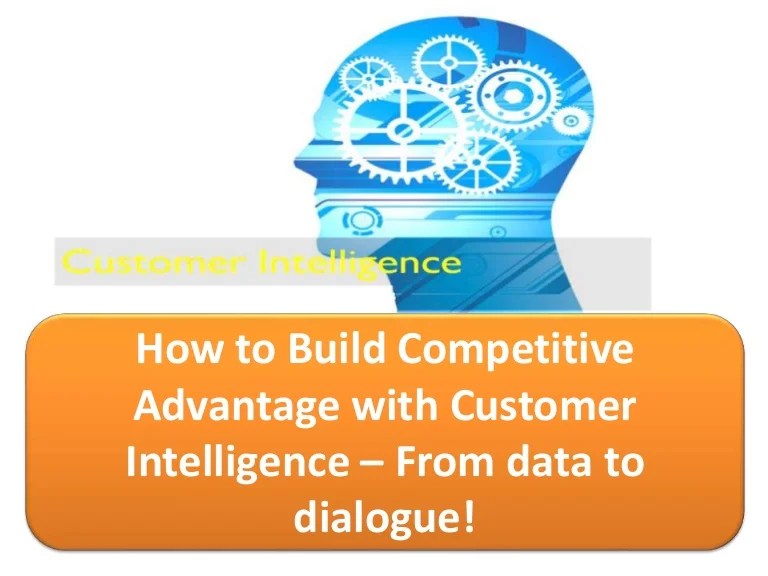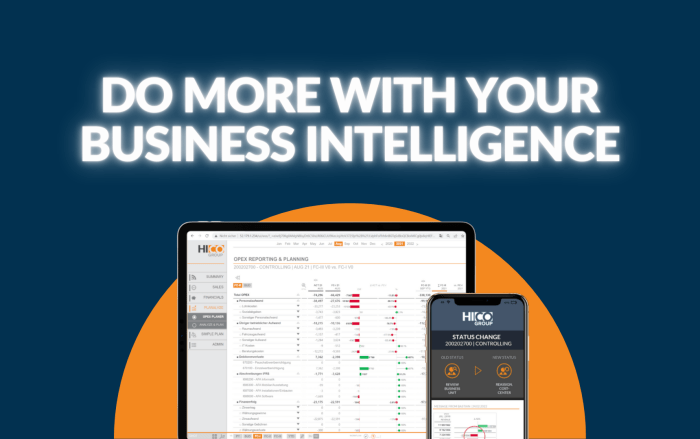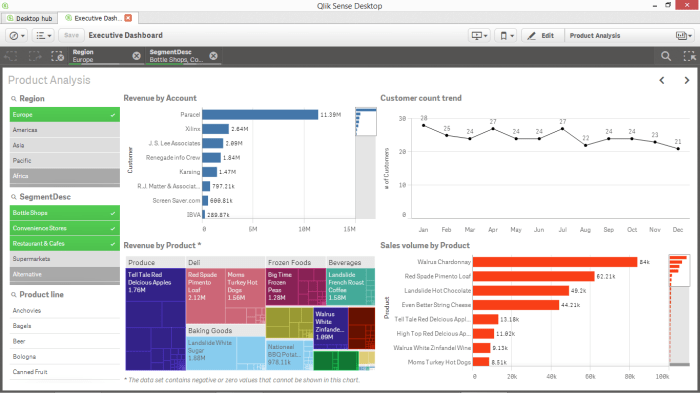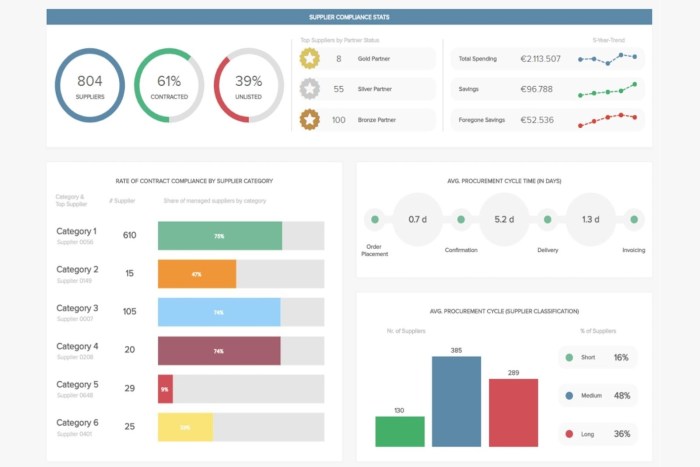Data visualization techniques for business intelligence are revolutionizing how companies make decisions. Forget endless spreadsheets; imagine instantly understanding complex data through compelling visuals. This guide dives into the power of charts, dashboards, and advanced techniques, showing you how to transform raw data into actionable insights that drive growth and profitability. We’ll explore various methods, from simple bar charts to interactive dashboards and cutting-edge GIS applications, empowering you to make data-driven decisions with confidence.
We’ll cover choosing the right visualization for your data, crafting effective visuals, and avoiding common pitfalls. Learn how to visualize key business metrics, from sales figures to customer behavior, and uncover hidden trends that can give your business a competitive edge. Get ready to unlock the potential of your data and turn information into a powerful asset.
Introduction to Data Visualization in Business Intelligence
Data visualization is no longer a luxury; it’s a necessity for businesses aiming to thrive in today’s competitive landscape. Effective data visualization transforms raw data into easily digestible insights, empowering businesses to make informed decisions, identify trends, and ultimately, boost their bottom line. Without it, crucial information can remain hidden, leading to missed opportunities and potentially costly mistakes.Effective data visualization is crucial for informed business decision-making.
It allows stakeholders to quickly grasp complex information, identify patterns and anomalies, and communicate findings clearly and concisely. This accelerates the decision-making process, fostering a more agile and responsive business environment. By presenting data visually, organizations can move beyond simple reporting and engage in truly data-driven strategies.
Misinterpretations from Poor Data Visualization
Poorly designed visualizations can lead to inaccurate interpretations and flawed decisions. For example, a misleading bar chart with improperly scaled axes can exaggerate or downplay differences, leading to incorrect conclusions about market share or sales performance. Similarly, a pie chart with too many slices can be confusing and difficult to interpret, hindering the understanding of key proportions. A cluttered chart with excessive labels and distracting elements can overwhelm the viewer, obscuring the essential message within the data.
Imagine a financial report using a 3D pie chart; the perspective distortion makes accurate comparison almost impossible. The resulting misinterpretations can range from minor inaccuracies to significant strategic errors.
Benefits of Various Visualization Techniques in Business
Different visualization techniques serve distinct purposes. Line charts effectively display trends over time, ideal for tracking sales figures or website traffic. Bar charts compare different categories, useful for analyzing product performance or customer demographics. Scatter plots reveal correlations between variables, helpful in understanding the relationship between advertising spend and sales revenue. Heatmaps are excellent for visualizing large datasets, identifying areas of high or low concentration, such as geographic sales data or customer satisfaction scores.
Dashboards, combining multiple visualizations, provide a holistic overview of key performance indicators (KPIs), offering a comprehensive view of business health at a glance. For instance, a sales dashboard might incorporate line charts showing sales trends, bar charts comparing product performance, and geographical maps highlighting sales distribution. Choosing the appropriate visualization technique significantly enhances the clarity and impact of data presentation, facilitating better understanding and informed decision-making.
Choosing the Right Visualization Technique
Data visualization isn’t just about making your data look pretty; it’s about effectively communicating insights to your audience. Choosing the wrong chart type can obscure your message, leading to misinterpretations and ultimately, poor business decisions. Selecting the right visualization requires careful consideration of your data, your audience, and the story you want to tell.The effectiveness of your data visualization hinges on selecting the appropriate chart type.
Different chart types excel at highlighting specific data characteristics. A poorly chosen chart can confuse rather than clarify, rendering your analysis useless. Understanding the strengths and weaknesses of various chart types is crucial for creating impactful visualizations.
Chart Type Comparison
The following table compares several common chart types, highlighting their suitability for different data characteristics. Remember, the “best” chart depends entirely on the context of your data and the message you’re aiming to convey.
| Chart Type | Best for Showing | Suitable Data Type | Example Use Case |
|---|---|---|---|
| Bar Chart | Comparisons of categories | Categorical data | Comparing sales figures across different product lines. |
| Line Chart | Trends over time | Time-series data | Illustrating website traffic over a month. |
| Pie Chart | Proportions or percentages of a whole | Categorical data representing parts of a whole | Showing the market share of different competitors. |
| Scatter Plot | Correlations between two variables | Numerical data | Analyzing the relationship between advertising spend and sales revenue. |
Factors Influencing Chart Selection
Choosing the right visualization technique involves more than just the data itself. Several key factors must be considered to ensure your visualization is both effective and impactful.Consider your audience’s familiarity with data visualization. A complex chart might confuse a non-technical audience, while a simple chart might be insufficient for experts. Similarly, the complexity of your data will influence your choice.
Simple data might be adequately represented by a bar chart, while more complex datasets might require more sophisticated techniques like heatmaps or network graphs. Finally, the message you want to convey is paramount. Each chart type emphasizes different aspects of the data; choose the one that best highlights your key findings. For instance, if you want to show a clear trend over time, a line chart is ideal.
If you need to compare the relative sizes of different categories, a bar chart would be more appropriate. The goal is to ensure the visualization directly supports your narrative and avoids misleading interpretations.
Interactive Data Visualization

Interactive data visualization is revolutionizing business intelligence, moving beyond static reports to create dynamic, engaging experiences that empower data-driven decision-making. Instead of passively consuming information, users can actively explore data, uncovering hidden insights and patterns that might otherwise be missed. This dynamic approach fosters a deeper understanding of complex data sets and facilitates more effective communication of key findings.Interactive dashboards, the heart of this revolution, offer a significant advantage by providing a centralized, real-time view of key performance indicators (KPIs).
This allows businesses to monitor progress, identify trends, and respond quickly to changing market conditions. The ability to drill down into specific data points, filter information, and visualize relationships in multiple ways empowers users to gain a more comprehensive understanding of their data, fostering faster, more informed decisions.
Interactive Visualization Tools and Their Functionalities
Several powerful tools facilitate the creation and deployment of interactive dashboards. These tools offer a range of functionalities, from simple drag-and-drop interfaces to sophisticated programming capabilities, catering to various levels of technical expertise.Tableau, for example, is known for its user-friendly interface and powerful visualization capabilities. Users can easily connect to various data sources, create interactive dashboards with drag-and-drop functionality, and share their visualizations with others.
Its functionality extends to advanced analytical features, enabling complex data exploration and insightful analysis. Power BI, another popular choice, offers similar capabilities, integrating seamlessly with Microsoft’s ecosystem. It provides robust data modeling, visualization, and reporting features, allowing businesses to create interactive dashboards that are tailored to their specific needs. Finally, Qlik Sense is renowned for its associative data exploration capabilities, allowing users to freely explore relationships between different data points and uncover hidden connections that might be missed with other tools.
Each tool offers a unique blend of features, allowing businesses to select the best fit for their specific requirements and technical capabilities.
Features of Effective Interactive Visualizations for Business Users
The effectiveness of an interactive visualization hinges on several key features designed to enhance user experience and facilitate insightful analysis.A crucial aspect is the intuitive user interface. A clear, uncluttered design ensures that users can easily navigate the dashboard and understand the information presented. This includes clear labeling, consistent color schemes, and intuitive controls. Furthermore, interactivity itself is paramount.
Users should be able to easily filter data, zoom in on specific areas, and drill down into details. The ability to customize views, selecting specific metrics and timeframes, is also crucial for tailoring the visualization to individual needs. Real-time data updates ensure that the information presented is always current and relevant, providing a dynamic and responsive view of business performance.
Finally, the ability to easily share and collaborate on visualizations is vital for fostering data-driven decision-making across teams. This might involve the ability to export visualizations, embed them in reports, or share them directly with colleagues.
Data Visualization Best Practices
Crafting compelling data visualizations isn’t just about choosing the right chart; it’s about presenting information clearly and effectively, leading to better business decisions. Ignoring best practices can lead to misinterpretations and missed insights, undermining the entire purpose of your visualization. This section highlights key strategies for creating impactful visuals that truly tell your data’s story.Effective data visualization requires careful consideration of several key elements.
Avoiding common pitfalls and adhering to established guidelines ensures your visualizations are not only visually appealing but also accurately represent your data and communicate your message clearly and concisely to your audience. The right techniques can transform complex datasets into easily digestible insights.
Common Pitfalls in Data Visualization and Their Solutions
Many common mistakes hinder the effectiveness of data visualizations. These issues range from cluttered charts to misleading scales and poor color choices. Addressing these problems proactively leads to much clearer and more impactful visualizations.
- Over-cluttering: Too much information crammed into a single visualization overwhelms the viewer. Solution: Prioritize key data points and use multiple, smaller charts if necessary to avoid overwhelming the audience.
- Misleading Scales: Truncated y-axes or inappropriate scaling can distort the perception of trends. Solution: Always start the y-axis at zero unless there’s a compelling reason not to. Clearly label axes and provide context for the scale used.
- Poor Color Choices: Using too many colors or clashing hues makes the visualization difficult to interpret. Solution: Employ a limited color palette that is both visually appealing and supports data differentiation. Consider colorblind-friendly palettes.
- Lack of Context: Visualizations without proper labels, titles, or notes leave the audience guessing. Solution: Always provide a clear title, axis labels, legends, and concise annotations to clarify the data presented.
- Inappropriate Chart Type: Choosing the wrong chart type for the data can obscure trends or mislead the viewer. Solution: Select chart types appropriate to the type of data and the message you want to convey (e.g., bar charts for comparisons, line charts for trends, scatter plots for correlations).
Guidelines for Creating Clear and Concise Visualizations
Clear and concise visualizations are crucial for effective communication. These guidelines focus on simplifying the visual presentation of data, ensuring your audience can quickly grasp the key insights.
Simplicity is key. Avoid unnecessary embellishments or details that distract from the main message. A well-designed visualization should be easy to understand at a glance. Use a clean, uncluttered design and a consistent style throughout the visualization. Consider the cognitive load on the viewer; the easier it is to process, the more effective the visualization will be.
For example, a simple bar chart comparing sales figures across different regions is far more effective than a complex 3D pie chart showing the same data.
Effective Use of Color, Labels, and Annotations, Data visualization techniques for business intelligence
Color, labels, and annotations are powerful tools for enhancing visualization clarity. Used correctly, they can guide the viewer’s eye, highlight key data points, and improve understanding.
For descriptions on additional topics like best business intelligence tools for small businesses, please visit the available best business intelligence tools for small businesses.
Color should be used strategically to highlight important data points or group similar items. Avoid using too many colors, as this can be confusing. A consistent color scheme should be used throughout the visualization. For instance, using different shades of blue to represent various product categories helps maintain visual consistency. Labels should be clear, concise, and easy to read.
They should accurately describe the data being presented. Annotations can be used to highlight specific data points or trends, providing additional context or explanation. For example, annotating a significant spike in sales with the relevant event (e.g., a marketing campaign) adds valuable context.
Visualizing Key Business Metrics

Data visualization isn’t just about pretty charts; it’s about translating complex business data into actionable insights. By effectively visualizing key performance indicators (KPIs), businesses can quickly identify trends, spot potential problems, and make data-driven decisions. This section explores how to effectively visualize crucial business metrics across various departments, focusing on best practices and providing illustrative examples.Effective visualization of key business metrics hinges on selecting the right chart type for the data and the message you want to convey.
A poorly chosen chart can obscure insights, while a well-chosen one can illuminate critical trends and patterns instantly. This requires understanding your data, your audience, and the story you want to tell.
KPIs Visualization Using Appropriate Chart Types
Choosing the right chart type is paramount. For instance, line charts are ideal for showing trends over time, such as monthly sales figures or website traffic. Bar charts are perfect for comparing different categories, like sales performance across various product lines. Pie charts effectively illustrate proportions, such as market share or customer demographics. Dashboards often combine several chart types for a comprehensive overview.
- Monthly Sales Performance: A line chart clearly displays sales trends over time, highlighting peaks and valleys, seasonal fluctuations, and overall growth. The X-axis represents months, and the Y-axis represents sales revenue. Adding a moving average line can help smooth out short-term fluctuations and reveal underlying trends more clearly.
- Product Sales Comparison: A bar chart allows for a direct comparison of sales figures across different products. Each bar represents a product, and its height corresponds to its sales revenue. This instantly reveals which products are performing well and which need attention.
- Customer Segmentation by Age: A pie chart effectively showcases the proportion of customers within different age groups. Each slice represents an age group, and its size reflects its percentage of the total customer base. This helps businesses tailor marketing strategies to specific demographics.
Best Practices for Visualizing Financial, Sales, and Customer Data
Visualizing financial, sales, and customer data requires careful consideration of the specific metrics and the desired outcome. Clear labeling, consistent scales, and a focus on key insights are crucial.
- Financial Data: Use charts like line charts to track revenue, expenses, and profit over time. Consider using area charts to show the contribution of different revenue streams. Avoid cluttering charts with too much detail; focus on the most important metrics.
- Sales Data: Bar charts are excellent for comparing sales performance across different regions, sales representatives, or product categories. Heatmaps can be used to visualize sales data across geographical areas, highlighting high-performing and underperforming regions.
- Customer Data: Pie charts and bar charts are useful for visualizing customer demographics and segmentation. Scatter plots can show the relationship between different customer attributes, such as purchase frequency and average order value. Funnel charts are excellent for visualizing the customer journey and identifying bottlenecks.
Hypothetical Dashboard: E-commerce Business
Let’s imagine an e-commerce business. A dashboard could effectively visualize key metrics like daily sales, website traffic, conversion rates, and average order value.
| Metric | Visualization | Description |
|---|---|---|
| Daily Sales | Line Chart | Shows daily sales revenue over the past month, highlighting trends and peaks/valleys. |
| Website Traffic | Line Chart | Displays website visits over the past month, broken down by source (organic, paid, social media). |
| Conversion Rate | Bar Chart | Compares conversion rates across different marketing campaigns or website pages. |
| Average Order Value | Bar Chart | Shows average order value over time, highlighting any changes in customer spending habits. |
| Customer Acquisition Cost (CAC) | Bar Chart | Compares CAC across different marketing channels to identify cost-effective strategies. |
Advanced Visualization Techniques: Data Visualization Techniques For Business Intelligence
Beyond basic charts and graphs, advanced visualization techniques unlock deeper insights from complex business data. These methods allow for the exploration of intricate relationships and patterns often hidden in large datasets, providing a more comprehensive understanding of business performance and opportunities. Mastering these techniques can significantly elevate your business intelligence capabilities.
Geographic Information Systems (GIS) in Business Intelligence
GIS applications offer powerful visualization capabilities for location-based data. By overlaying business data onto geographical maps, businesses can analyze spatial patterns and trends. For instance, a retail chain could use GIS to identify optimal locations for new stores based on population density, competitor proximity, and customer demographics. Visualizing sales data on a map allows for quick identification of high-performing and underperforming regions, enabling targeted marketing campaigns or resource allocation.
The visual representation of this data allows for immediate identification of clusters and outliers, leading to more effective decision-making.
Network Graphs for Complex Datasets
Network graphs are ideal for visualizing relationships between different entities. Imagine a social media network, where nodes represent users and edges represent connections. Analyzing the network structure reveals influential users, communities, and information flow patterns. Similarly, in a supply chain, nodes could be suppliers, manufacturers, and distributors, with edges representing the flow of goods. Visualizing this network helps identify bottlenecks, vulnerabilities, and potential areas for improvement.
The use of color-coding and node size can further enhance the visualization by highlighting key players or critical pathways. These visualizations provide a dynamic and insightful representation of complex interconnected systems.
Heatmaps for Pattern Identification
Heatmaps are excellent for visualizing patterns and trends in large datasets by using color gradients to represent data density or magnitude. For example, a heatmap could show customer activity on a website, with hotter colors indicating higher click-through rates or conversion rates. This allows for quick identification of popular pages or areas needing improvement. In finance, heatmaps can visualize correlations between different assets, revealing potential risks or investment opportunities.
By effectively representing the magnitude of data points through color intensity, heatmaps provide an intuitive way to understand complex relationships and identify significant trends.
Case Studies of Effective Data Visualization

Data visualization isn’t just a pretty picture; it’s a powerful tool driving impactful business decisions across various sectors. Seeing the data, rather than just reading it, reveals hidden patterns, trends, and opportunities that can significantly boost efficiency and profitability. Let’s explore some compelling examples of how data visualization has transformed businesses.
Effective data visualization translates complex datasets into easily digestible formats, fostering better understanding and faster, more informed decision-making. This leads to improved operational efficiency, enhanced customer experiences, and ultimately, a stronger bottom line. The following case studies showcase the transformative power of data visualization across different industries.
Data Visualization in Retail: Optimizing Inventory Management
A major clothing retailer implemented a sophisticated data visualization system to monitor inventory levels across its nationwide stores. By using interactive dashboards displaying real-time sales data, stock levels, and predicted demand, the company was able to identify slow-moving items and adjust ordering accordingly. This resulted in a significant reduction in warehousing costs and improved cash flow, as they minimized excess inventory and avoided stockouts of popular items.
The visualization system provided a clear, holistic view of their inventory, eliminating guesswork and enabling data-driven decisions. The impact was a 15% reduction in inventory holding costs within the first year.
Data Visualization in Healthcare: Improving Patient Outcomes
A large hospital system utilized data visualization to analyze patient data, identifying trends in readmission rates. Interactive maps highlighted geographic areas with high readmission rates, allowing hospital administrators to pinpoint specific contributing factors, such as inadequate post-discharge care or insufficient patient education. By visualizing this data, the hospital developed targeted interventions, resulting in a 10% decrease in readmissions within six months.
The improved patient outcomes also translated to cost savings for the hospital and improved patient satisfaction. The visualizations allowed for a granular understanding of patient journeys, revealing previously unseen bottlenecks and areas for improvement.
Data Visualization in Finance: Detecting Fraudulent Transactions
A financial institution implemented a real-time fraud detection system using data visualization. By displaying transaction data on interactive dashboards that highlighted unusual patterns and anomalies, the system alerted analysts to potentially fraudulent activities. The visual representation of transaction data, including location, amount, and timing, allowed analysts to quickly identify and investigate suspicious transactions, significantly reducing the time it took to detect and prevent fraudulent activities.
This proactive approach resulted in a 20% reduction in fraudulent transactions and millions of dollars in cost savings. The system’s ability to visualize complex financial data in real-time proved invaluable in protecting the institution and its clients.
The Future of Data Visualization in Business Intelligence
Data visualization is rapidly evolving, driven by advancements in technology and the increasing demand for insightful, actionable intelligence from businesses of all sizes. The future promises even more immersive, interactive, and intelligent visualization tools, transforming how we understand and utilize data. This will lead to more effective decision-making and a competitive edge in the marketplace.The integration of cutting-edge technologies is reshaping the landscape of data visualization in business intelligence.
We’re seeing a convergence of traditional techniques with emerging trends, creating powerful new approaches to data analysis and interpretation. This evolution offers both exciting opportunities and significant challenges for businesses.
Augmented and Virtual Reality Applications in Data Visualization
Augmented reality (AR) and virtual reality (VR) are poised to revolutionize how businesses interact with their data. Imagine wearing AR glasses that overlay key performance indicators (KPIs) directly onto a physical factory floor, allowing managers to instantly see production bottlenecks. Or consider a VR environment where executives can explore 3D models of sales data, gaining a more intuitive understanding of market trends and customer behavior.
These immersive experiences offer unparalleled levels of engagement and insight, transforming complex datasets into easily digestible and actionable information. For instance, a company could use VR to simulate different marketing scenarios, visualizing the potential impact of various strategies on sales projections before implementing them in the real world. This allows for informed decision-making, reducing risks and maximizing ROI.
Advancements in Visualization Techniques and Their Implications
Several advancements are shaping the future of data visualization. Artificial intelligence (AI) is playing a crucial role, automating tasks such as data cleaning, feature extraction, and the selection of appropriate visualization techniques. AI-powered systems can even generate visualizations automatically, based on the characteristics of the data, saving analysts valuable time and effort. Furthermore, advancements in machine learning allow for more sophisticated predictive analytics, visualizing future trends and potential outcomes with greater accuracy.
For example, a retail company could utilize AI-powered visualization to predict future customer demand based on past purchase patterns and external factors, allowing for optimized inventory management and reduced waste. This proactive approach, facilitated by advanced visualization, leads to improved efficiency and profitability.
Challenges and Opportunities in Data Visualization for Business Intelligence
While the future of data visualization is bright, several challenges need to be addressed. The increasing volume and complexity of data require more powerful and scalable visualization tools. Ensuring data security and privacy is also paramount, particularly with the use of cloud-based visualization platforms. Furthermore, the effective training and upskilling of employees to utilize these advanced tools are essential for maximizing their potential.
However, the opportunities are vast. Data visualization can unlock valuable insights, leading to improved decision-making, increased efficiency, and a competitive advantage. The ability to effectively communicate complex data to diverse stakeholders, fostering collaboration and understanding, is a key driver of success in today’s data-driven world. Companies that embrace these advancements and address the associated challenges will be well-positioned to thrive in the future.





